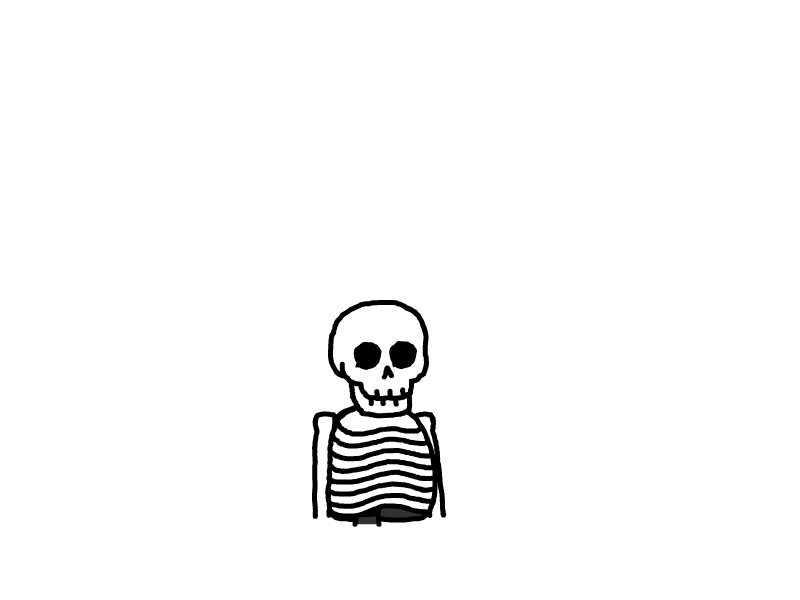GxEPD_test
关于 GxEPD2 库的使用测试
网络上实在是没有关于 GxEPD 库的说明,好像所有人都会用(除了我),这篇文章旨在帮助第一次接触的小白踩坑 GxEPD
1. api测试
1.1 display.nextPage()
从源码中看,display.nextPage() 返回的是一个bool类型的数据,应该是显示下一页面,并判断屏幕是否显示完成,例程中的:
do
{
display.fillScreen(GxEPD_WHITE); // 设置背景颜色
display.setCursor(x, y); // 设置光标位置 (显示图像的起始位置)
display.print("hellowprld"); // 要显示的文本
} while (display.nextPage());
从上述代码可以看到,在显示未完成的时候会执行一个循环,将图像显示出来。在实际测试中确实如此。
下面这样做也可以将画面正常显示出来:
/*不带 do While 循环*/
display.setCursor(x + 10, y + 10);
display.print("helloWorld");
display.nextPage();
1.2 display.firstPage()
源码如下:
void firstPage()
{
fillScreen(GxEPD_WHITE);
_current_page = 0;
_second_phase = false;
}
GxEPD2 库的 firstPage() 函数是用来初始化显示内容的起始页面的。在使用 GxEPD2 库绘制图形或文字前,必须先调用 firstPage() 函数。
该函数会返回布尔值,表示是否还有更多的页面需要绘制。如果返回 true,说明还有更多页面需要绘制,可以继续调用其他绘图函数;如果返回 false,说明所有的页面都已经绘制完毕,可以调用 display() 函数更新显示。
void loop() {
// 初始化页面
if (epd.firstPage()) {
do {
// 绘制图形或文字
// ...
} while (epd.nextPage());
}
// 更新显示
epd.display();
}
1.3 display.fillScreen()
刷新屏幕颜色,让屏幕完全变成某个颜色。
/*如果是bw两色的墨水屏,颜色如下,如果需要不同灰度,请详见源码*/
#define GxEPD_BLACK 0x0000
#define GxEPD_WHITE 0xFFFF
1.4 display.setCursor()
设置文字,图像的显示位置,根据X,Y确认位置。
1.5 isplay.setFullWindow()
设置墨水屏全局刷新
1.6 display.setPartialWindow()
设置墨水屏局部刷新 参数为 xy 刷新坐标 wh 刷新窗口大小
- void updateWindow(uint16_t x, uint16_t y, uint16_t w, uint16_t h, bool using_rotation = true):更新矩形窗口,其中 x 和 y 分别代表矩形窗口的左上角坐标,w 和 h 分别代表矩形窗口的宽度和高度。
- void updateToWindow(uint16_t x, uint16_t y, uint16_t w, uint16_t h, bool using_rotation = true):像素内存更新到矩形窗口,其中 x 和 y 分别代表矩形窗口的左上角坐标,w 和 h 分别代表矩形窗口的宽度和高度。
您可以在绘制图像之后调用 updateWindow() 函数,仅更新该图像区域,从而实现局部刷新。
#include <GxEPD2_BW.h>
#include <GxEPD2_3C.h>
// 创建一个 GxEPD2_BW 或 GxEPD2_3C 对象(取决于您所使用的显示器)
GxEPD2_BW<GxEPD2_154c, GxEPD2_154c::HEIGHT> display;
void setup() {
// 初始化显示器
display.init();
}
void loop() {
// 在屏幕上绘制一个黑色矩形
display.fillRect(10, 10, 100, 100, GxEPD_BLACK);
// 将更改显示在局部刷新区域内
display.updateWindow(10, 10, 100, 100, true);
// 执行其他任务
// ...
}
在上面的代码中,我们创建了一个 GxEPD2_BW 或 GxEPD2_3C 对象(取决于您所使用的显示器),并使用 fillRect 方法在屏幕上绘制了一个黑色矩形。然后,我们使用 updateWindow 方法来将更改显示在局部刷新区域内。
2. 让墨水屏显示出中文
这个的教程比较多,这里简单说一下
显示中文需要 U8g2_for_Adafruit_GFX 这个库 ,这里我们用到 甘草酸不酸大神修改好的库 下载链接 : https://wwvd.lanzoul.com/iddKx0mgar8j
下载好以后,将 U8g2_for_Adafruit_GFX 库放在 ./Project/.pio/libdeps/esp12e 中。有的教程说需要改一下头文件,实测改不改都可以正常显示。
在项目的src下创建 main.cpp 复制以下代码 :
#include <Arduino.h>
#include <GxEPD2_BW.h> //e-paper显示库
#include <Fonts/FreeMonoBold9pt7b.h> //字体库
#include <U8g2_for_Adafruit_GFX.h>
#include "gb2312.c"
void helloWorld();
GxEPD2_BW<GxEPD2_290, GxEPD2_290::HEIGHT> display(GxEPD2_290(/*CS=15*/ SS, /*DC=4*/ 4, /*RST=2*/ 2, /*BUSY=5*/ 5)); // GDEH029A1 128x296, SSD1608 (IL3820)
U8G2_FOR_ADAFRUIT_GFX u8g2Fonts;
void setup()
{
Serial.begin(115200);
display.init(115200, true, 2, false);
/*中文字体初始化*/
display.init(115200);
display.setRotation(1);
u8g2Fonts.begin(display); // 将u8g2过程连接到Adafruit GFX
u8g2Fonts.setFontDirection(0);
u8g2Fonts.setForegroundColor(GxEPD_BLACK); // 设置前景色
u8g2Fonts.setBackgroundColor(GxEPD_WHITE); // 设置背景色
display.setTextColor(GxEPD_BLACK);
u8g2Fonts.setFont(u8g2_font_wqy16_t_gb2312a);
helloWorld();
delay(100);
Serial.println("over");
}
void loop()
{
// put your main code here, to run repeatedly:
}
void helloWorld()
{
display.fillScreen(GxEPD_WHITE);
do
{
u8g2Fonts.setCursor(5, 25);
u8g2Fonts.println("不要温顺的走进那个良夜,");
u8g2Fonts.println("激情不能被消沉的暮色淹没,");
u8g2Fonts.println("abc . ! = - ");
} while (display.nextPage());
}
直接复制运行,可以看到,墨水屏幕已经正常显示出内容(本次显示为 2.9 寸双色)
1. u8g2Fonts.setFontDirection()
setFontDirection 函数用于设置字体的方向。此函数控制字体如何从左到右、从右到左、从上到下或从下到上呈现。其中,direction 参数是一个 8 位无符号整数,用于指定字体的方向,比如 0、90、180、270 等。
#include <U8g2lib.h>
U8G2_FOR_ADAFRUIT_GFX u8g2;
void setup() {
u8g2.begin();
u8g2.setFontDirection(90);
}
void loop() {
// 绘制文本等
}
3. 画图
- 导入
Adafruit_GFX.h - 初始化屏幕:
void setup() { Serial.begin(115200); display.init(); u8g2Fonts.begin(display); //将u8g2连接到display display.firstPage(); display.display(1); display.init(115200); display.setRotation(1); } - 画图
display.drawLine(0, 0, 20,0,0);//(初始x,初始y,最终x,最终y,颜色)(0黑1白) - 刷新屏幕
display.nextPage()
-
绘制像素(点)
首先是最基本的像素推送器。你可以调用它,并指定参数:X Y坐标和一种颜色,它会在屏幕上生成一个点:
void drawPixel(uint16_t x, uint16_t y, uint16_t color); -
绘制线
你也可以画一条线,指定起点和终点和颜色:
void drawLine(uint16_t x0, uint16_t y0, uint16_t x1, uint16_t y1, uint16_t color);对于水平或垂直的线,有优化的线绘制功能,避免角计算:
void drawFastVLine(uint16_t x0, uint16_t y0, uint16_t length, uint16_t color); void drawFastHLine(uint8_t x0, uint8_t y0, uint8_t length, uint16_t color); -
绘制矩形
接下来,使用以下程序可以绘制和填充矩形和正方形。每个都可以输入矩形左上角的X、Y对、宽度和高度(以像素为单位)以及颜色。drawRect()只渲染矩形的框架(轮廓)-内部不受影响-而fillRect()用给定的颜色填充整个区域:
void drawRect(uint16_t x0, uint16_t y0, uint16_t w, uint16_t h, uint16_t color); void fillRect(uint16_t x0, uint16_t y0, uint16_t w, uint16_t h, uint16_t color);要创建具有对比轮廓的实线矩形,首先使用fillRect(),然后在其上使用drawRect()。
-
绘制圆
同样,对于圆圈,你可以画边框和填充。每个函数输入一个X, Y对作为中心点,半径(以像素为单位)和颜色:
void drawCircle(uint16_t x0, uint16_t y0, uint16_t r, uint16_t color); void fillCircle(uint16_t x0, uint16_t y0, uint16_t r, uint16_t color); -
绘制圆角矩形
对于圆角矩形,绘制和填充功能都是可用的。每个矩形都以X、Y、宽度和高度(就像普通矩形一样)开始,然后是角半径(以像素为单位),最后是颜色值:
void drawRoundRect(uint16_t x0, uint16_t y0, uint16_t w, uint16_t h, uint16_t radius, uint16_t color); void fillRoundRect(uint16_t x0, uint16_t y0, uint16_t w, uint16_t h, uint16_t radius, uint16_t color);这里还有一个额外的小技巧:因为画圆函数总是相对于一个中心点像素绘制的,所以最终的圆直径将总是一个奇数像素。如果需要一个均匀大小的圆(这将在像素之间放置中心点),可以使用一个圆角矩形函数来实现:传递相同的宽度和高度(均为偶数),以及刚好为该值一半的角半径。
-
绘制三角形
对于三角形,同样有绘制和填充函数。每个函数都需要七个参数:定义三角形的三个角点的X、Y坐标,然后是颜色:
void drawTriangle(uint16_t x0, uint16_t y0, uint16_t x1, uint16_t y1, uint16_t x2, uint16_t y2, uint16_t color); void fillTriangle(uint16_t x0, uint16_t y0, uint16_t x1, uint16_t y1, uint16_t x2, uint16_t y2, uint16_t color);

